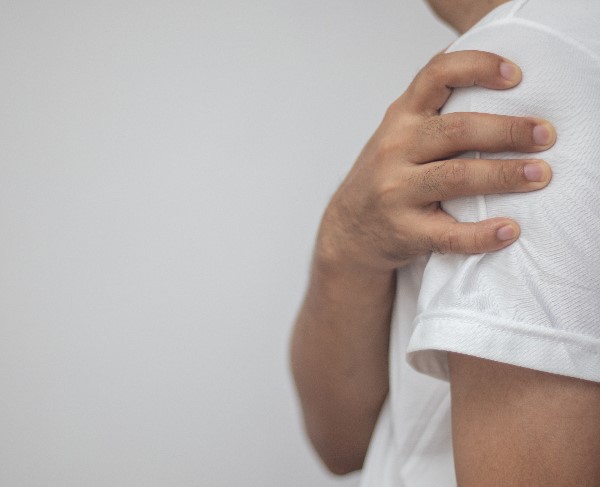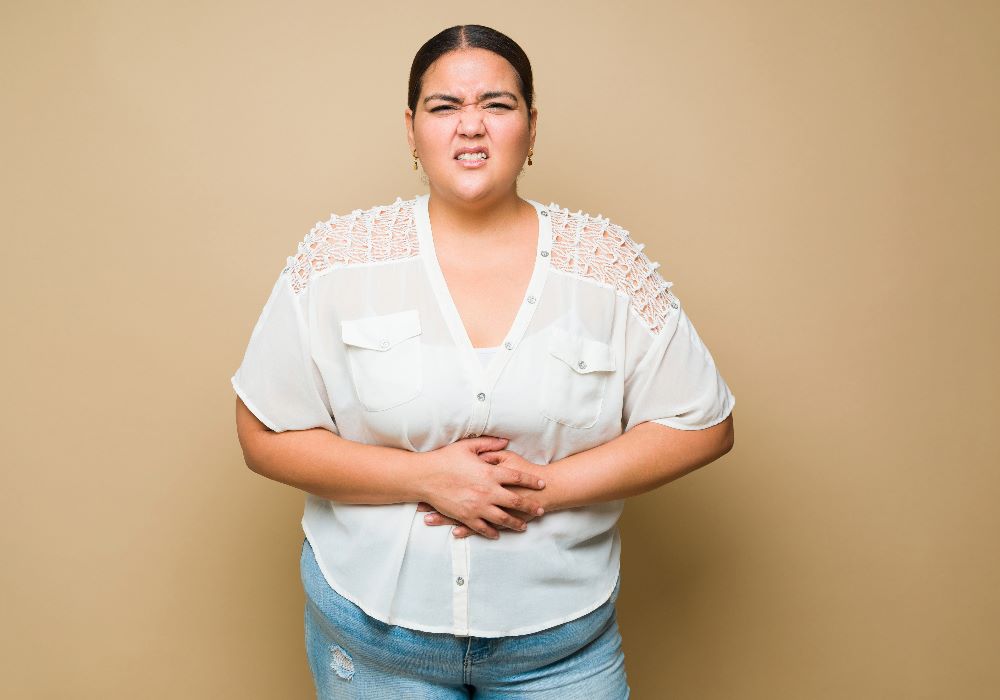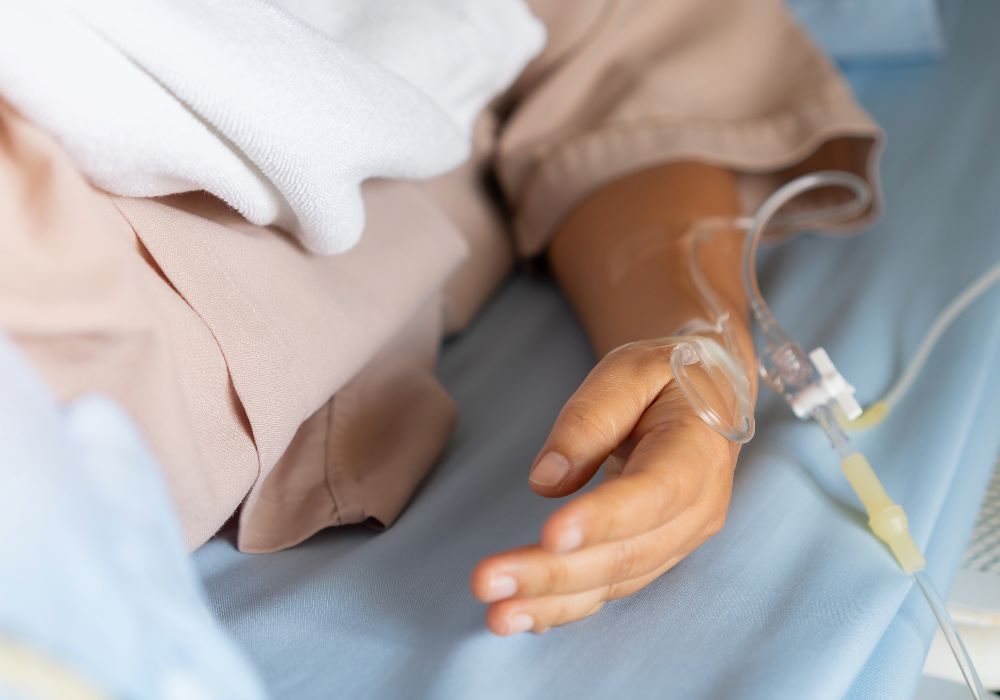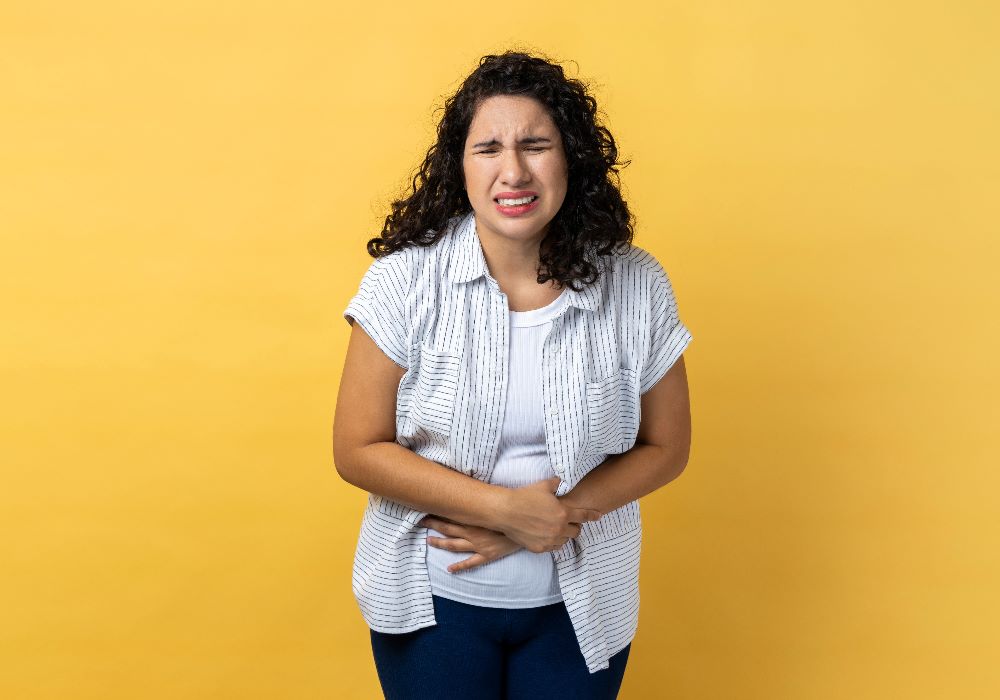Left Shoulder Pain After Gastric Sleeve or Gastric Bypass Surgery
“Pain in the left arm, shoulder, upper chest, or left side at early recovery stages is very common.”

Most of the patients who undergo laparoscopic weight loss surgery are familiar with shoulder pain, left side pain, or pain in the chest area that is often described as “if someone was sitting on my chest”.
Cause:
- Residual gas trapped around the stomach pressing toward the diaphragm.
- Tissue injury caused by the change of temperature from gas as well as drying effect from gas.
- Nerve irritation by the CO2 gas (especially the diaphragm nerve).
- General trauma from surgery to the surrounding tissue.
To perform laparoscopic weight loss surgery, the surgeon inflates the abdomen with CO2 gas through a tiny needle inserted below the belly button. This is done to create room around the stomach and intestines, to be able to manipulate them as needed, lift the liver up and have a better vision of the internal organs. Before the surgery is finished, the gas is removed and “washed out” with saline solution as much as possible.
If the pain is in your left shoulder, it is a so-called referred pain, meaning it originates in a different part of your body, but you feel it in your shoulder. This happens because the diaphragm (located above the stomach) and shoulder share the same nerves, in particular the Phrenic nerve. Usually, the pain originates from the stomach pouch itself or the gas around it that is pressuring toward the diaphragm, and the phrenic nerve makes us feel it in the shoulder. This pain can appear at later recovery stages too, especially when eating or drinking too fast and too much.
How long does it last?
The trapped gas normally gets absorbed by our body (and is released through the process of breathing) within about 48 hours but may last up to several days. However, it does not mean that the pain caused by it goes away immediately. The abdominal tissues and nerves damaged by the gas take a while to heal. Please refer to the following article that addresses the gas pain issue in more detail: https://centerforendo.com/post-surgical-shoulder-pain
Most patients report feeling much better and have less pain only 24 hours after surgery and are ready for discharge and require no medical assistance 48 hours post-operatively.
Pain relief:
The best remedy is walking (ambulating). Once you wake up in your hospital room after surgery and can sit on the edge of your bed without feeling dizzy, start walking, first in your room, once you feel more confident – in the halls. Make laps every 2-3 hours including at night if you can. Patients who walk a lot immediately after surgery recover from pain and general discomfort much faster and require less opioids. Why? One of the reasons is because walking stimulates blood circulation, thus gas residue gets absorbed into the blood stream faster and is simply exhaled.
There is no scientific proof for the following solutions: applying a heating pad to the affected shoulder or chest, alternating between lying flat or on your side, increased use of post-operative painkillers, use of over-the-counter medications like GasX (the gas is not trapped inside of the intestines but on the outside) and consumption of hot liquids such as tea. These remedies may seem to help because they bring us mental comfort: it seems like we are doing something to get relief. There is nothing wrong with using those tips, of course, after all, we want to do all we can to feel better when being in pain. But time is the best healer in this case.
Written by Go Light Bariatrics
More From This Category
Permanent Acid Reflux (GERD) After Gastric Sleeve Surgery. Cause & Solution
Explore the causes and lasting solutions for permanent acid reflux after gastric sleeve surgery. Regain comfort and quality of life with actionable guidance.
Phlebitis (vein inflammation) after weight loss surgery
Manage phlebitis after weight loss surgery effectively with expert guidance and insights. Discover essential tips and resources for a smoother recovery journey.
Constipation & Hemorrhoids After Bariatric Surgery
Learn about stomach noises, gurgling, and growling after weight loss surgery. Discover why they're common the initial months. Find relief and answers here.
Left Shoulder Pain After Gastric Sleeve or Gastric Bypass Surgery
Manage post-surgery left shoulder pain effectively. Discover causes & effective solutions for gastric sleeve and gastric bypass patients.
Painkillers and anti-inflammatories, acceptable options after weight loss surgery
Painkillers and anti-inflammatories, acceptable options after weight loss surgery " Read More "Always consult with a medical professional before using any medication" After any type of bariatric weight loss surgery, there are certain limitations regarding painkillers and anti-inflammatory medications that can be safely used without damaging your small new stomach.…
Additional Medications Frequently Prescribed Post-Op
Additional Medications Frequently Prescribed Post-Op " Read More "Not all the medications are prescribed to every patient, we simply tried to prepare the most exhaustive list." Dear Patient, In response to frequent questions about additional medications that our medical team prescribes upon hospital discharge, we prepared the following information. Please…
What to Expect During Your Weight Loss Surgery Hospital Stay?
What to Expect During Your Weight Loss Surgery Hospital Stay? Read More "Learn what you can expect during your Weight Loss Surgery Journey from the moment you arrive until we say goodbye." Learn what you can expect during your Weight Loss Surgery Journey at Florence hospital stay from the moment you arrive until…








0 Comments